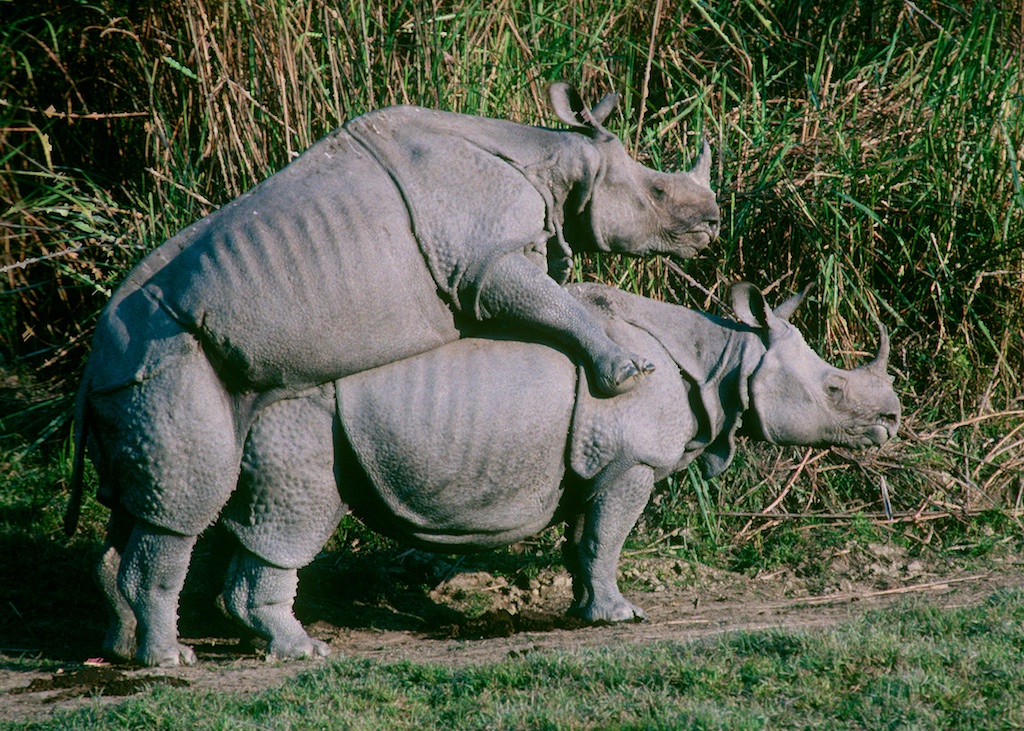
The one-horned rhinoceros (Rhinoceros unicornis) was once distributed throughout the northern part of the Indian subcontinent. Today, the species is restricted to pockets in the Indo-Nepal Terai, North Bengal and, of course, in the protected grasslands of Assam. Listed as ‘vulnerable’ by the IUCN, poaching and habitat loss continue to be the greatest threats to its survival. The Kaziranga National Park, a UNESCO World Heritage site, is home to nearly two-thirds of the world’s one-horned rhino population. The park came into existence in 1905 after Baroness Mary Curzon, wife of Lord Curzon, Viceroy of India, visited the area in hopes of spotting one of these majestic creatures. But after failing to see a single rhino on her trip, she apparently persuaded her husband to take urgent steps to protect them; and thus the Kaziranga Reserve Forest came into being. Over the decades, Kaziranga went from being a Game Sanctuary to a Wildlife Reserve, until the Assam Government finally designated it as a National Park in 1968. This was ratified by the Central Government in 1974. While Lord Curzon may have set the area aside for protection, Kaziranga’s rhino success is primarily due to the exemplary protection provided by its Rangers and Forest Guards. Many of the latter have even lost their lives in encounters with heavily armed poachers. Reports say that so far this year, 13 rhinos have been poached in the park. That many more haven’t been killed is testimony to the fierce dedication of Kaziranga’s frontline staff, who man the many anti-poaching camps day and night, and patrol their beats in the face of grave dangers. Further reading: https://en.wikipedia.org/wiki/Indian_rhinoceros http://zeenews.india.com/news/eco-news/poachers-kill-rhino-in-assam_1667402.html

 CI is a non-profit, non-commercial portal that aims to facilitate wildlife and nature conservation by providing reliable information and the tools needed to campaign effectively.
CI is a non-profit, non-commercial portal that aims to facilitate wildlife and nature conservation by providing reliable information and the tools needed to campaign effectively.
Chosen as 'Picture of the Week'
From its precarious position a hundred years ago, the one-horned rhinoceros has come a long way, thanks to strict protection. It is estimated that the current population in Kaziranga National Park, where this picture was taken, is around 2400 (March 2015).